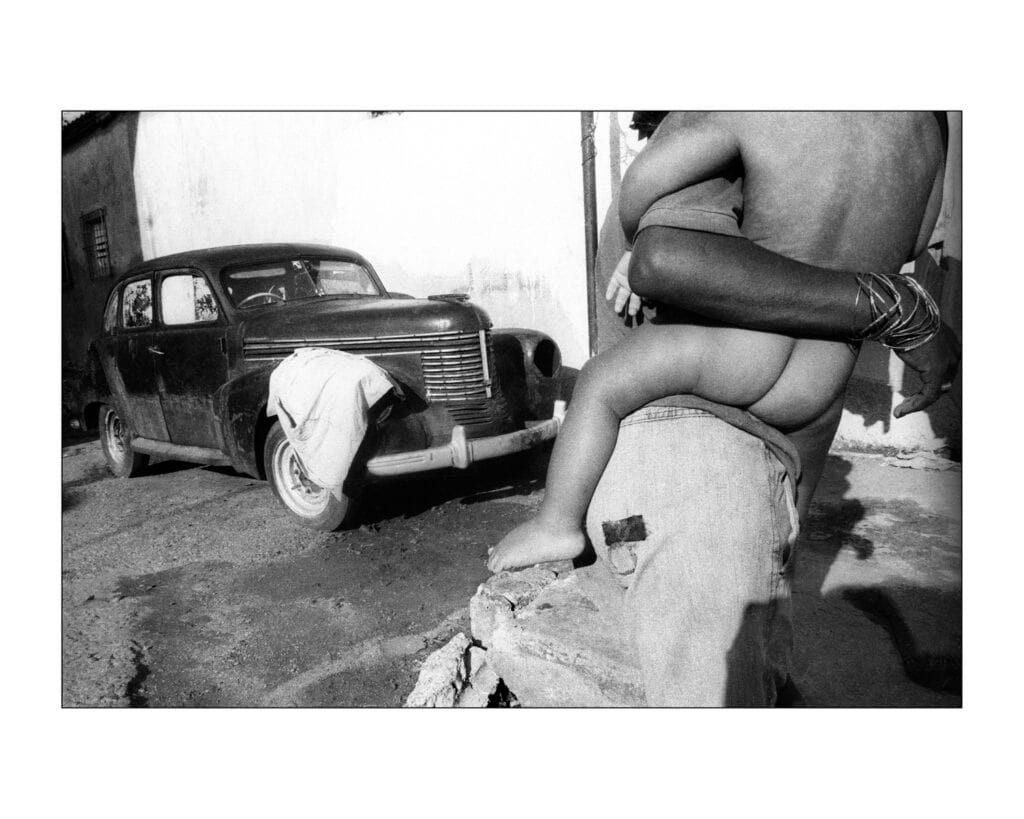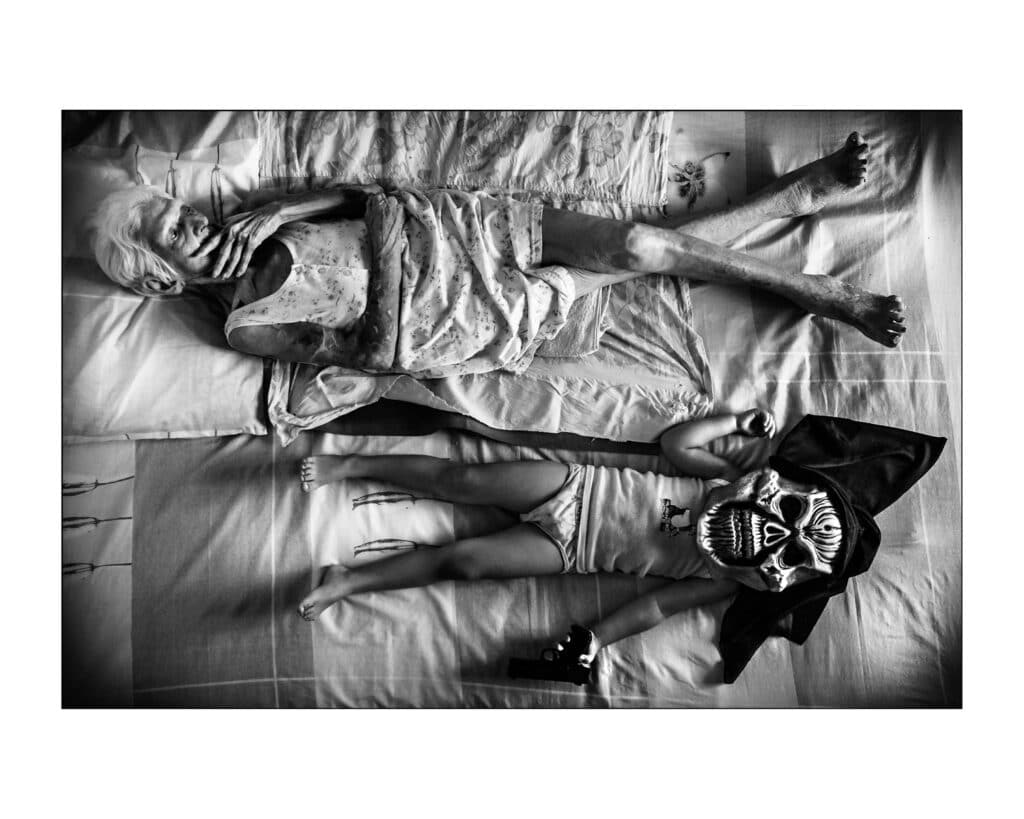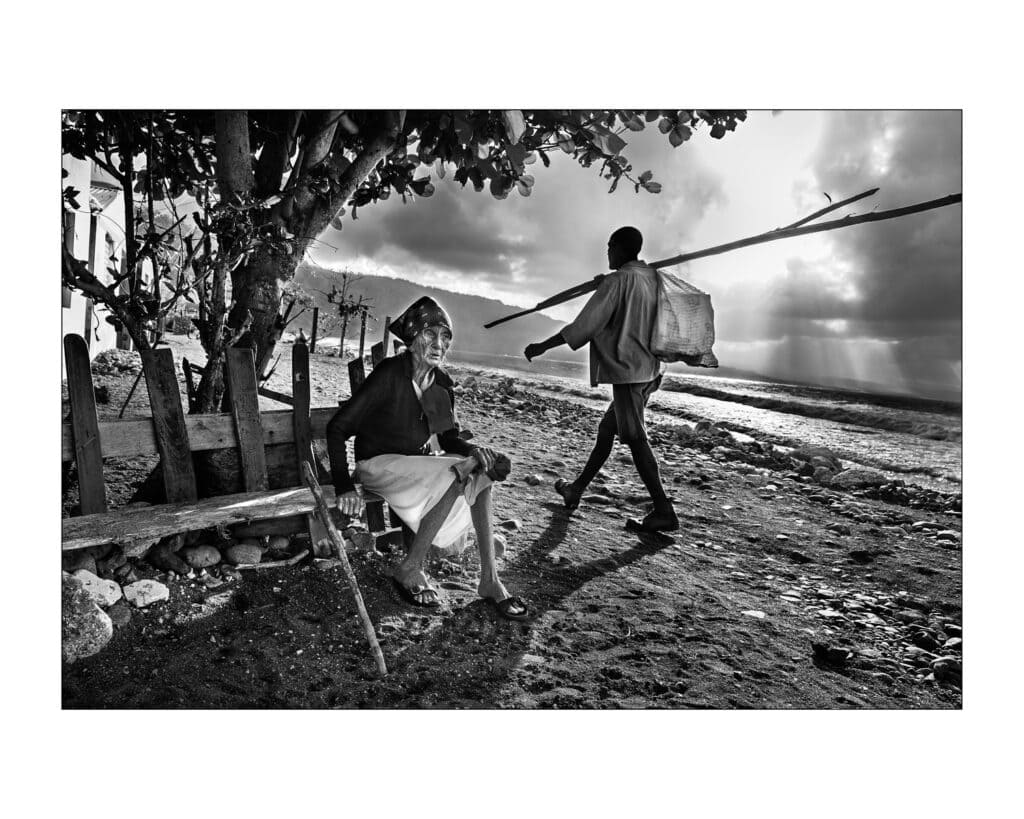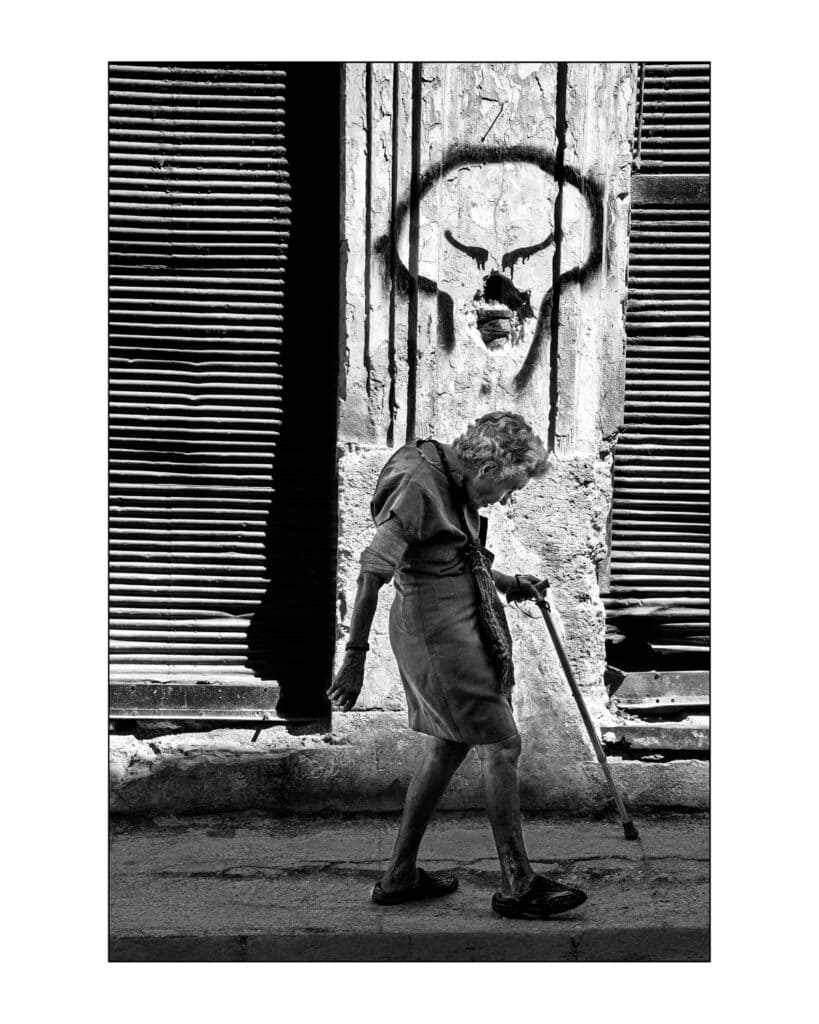The Annex Gallery at the Pendleton Art Center is hosting a series of Fotofocus exhibitions that are powerful in their artistic expression and photographic journalism.
It can be said that there is often much more going on in an image than what is casually gleaned. Raúl Cañibano’s oeuvre is one such body of work. He is known as the Cuban Insider, capturing both the inherent nationalism of his beloved Cuba and a mystical subtext that defies definition.
Raúl Cañibano took up analog photography during a time of economic crisis due in large measure to the breakup of the Soviet Union on the heels of the Cold War. As economic problems increased and materials and supplies became impossible to obtain, Cañibano was forced to cease his progress and return to his old job to survive.
With the turn of the Millennium however, a nascent tourism industry began developing in Cuba, opening the cultural door to visiting international photographers, likeminded in the search for documentary material and personal expression.
Thematically speaking, in this article we will follow his work in three veins: the Cuban countryside, Cuidad: the city Havana, and Perspective on Aging.
Raúl Cañibano states that he has always been attracted to what he terms the nobility of the Cuban peasant class. In the late 1990’s, armed with his camera and backpack, Cañibano would travel to various rural locations on the island in a photojournalistic search for the character of the people. In one interview, he describes his approach to the problem of interacting as an unknown interloper with the encountered populace. “I’m a shy person and never take photographs on the first day. Instead, I tried to create confidence with them until we were invited into their houses and could photograph their lives more intimately.” This is an indication of the sensitive and patient process employed by this empathetic artist in capturing his impression of the moment.

As a rider pauses on his horse in the low setting sun, a young woman washes her hair in a bucket. The fleeting shadow of one half of a paused horse and rider is captured on the corner of a wood-framed structure. As she bends over in the ablution process, the woman’s sun drenched legs and body imaginatively become the continuation of the horse’s body across the spacial chasm. The visual pun plays out with her rinsed hair completing the horse’s tail.

Raúl Cañibano’s creative and empathetic eye documents an array of powerful images in his beloved city of Havana. A woman brushing by in close proximity, carries a child on her hip in the customary manner. Her dark bangled forearm crosses the back of the naked youth as his leg rests gracefully on the hip, clothed in coarse faded jean. The headless dynamic of mother and child towers in the picture frame, seeming to stumble over the block of shadow in the lower right corner. Nearby a dark classic car stands abandoned against a starkly whitewashed wall. The casual incidental of a white shirt draped over the glassless headlight opening, completes the compositional balance.
Cañibano’s inclusion of a vehicle, while aesthetically indispensable, reads as happenstance understated in the message context of the image. True to his insider perspective, Cañibano captures the lives of the city dwelling population, their daily activities and struggles set against their shops and dwellings. He succeeds in understating the occasional inclusion of the ubiquitous vehicles, an element of fascination for so many who visit the island interior, while excavating a deeper vein of human experience.
“ I think Surrealism is very poetic. And perhaps for that reason my work has something
of a mystical feeling.” Raúl Cañibano

Several of this images forwardly profile the head of a person before an evolving scenario which leaves many circumstances open to interpretation.
I enjoyed this approach in “Havana, 1998”. The setting seems split in almost complete halves. The diagonals cast by the strong sunlight combined with cutout patterns on the wall march the eye forcefully across the composition. On the far wall, a seated woman’s face is obscured in the act of drinking from a paper cup. The wooden bench adds it’s split-patterned shadow to the compositional sweep. On the right side, a profile of an aging man passes, his sun-bronzed head and neck filling the camera format from top to bottom. The camera studies the texture of his leathery skin and close cropped skull as his profiled features align with the prevailing diagonals.
A second splintery bench is included in the bottom inches of the right corner. Betrayed only by his worn soles, the reclining presence of another denizen emerges beneath a checkered covering.

Some of the most poignant images document the plight of the elderly as they age out in the poverty stricken culture. A young man strides on the rock-strewn shoreline, silhouetted against sunbeams streaming through a broken sky. His long cast shadow intersects the figure of an elderly woman resting on a bench crudely constructed of shards of wood.The man reaches out with his hand but not to her. The long stick on his shoulder points directly to her absent expression and sightless eye, but she is unnoticed. Raúl Cañibano captures the pathos of the two figures with yet another layer of insight. The A-frame of his legs, in confident striding gesture, is precisely mirrored in the woman’s legs, seated on the bench. But disoriented and unsure, she faces a different direction.

Another powerful image is the woman walking alone between shuttered metal openings. Silhouetted against the brightly lit crumbling concrete, she makes her passage in misshapened shoes on an ulcerated leg. As a victim of scoliosis, she has no choice but to be mindful of the broken sidewalk. She determinedly strides forward under a crudely graffitied skull grimacing on the pocked and scarred concrete.